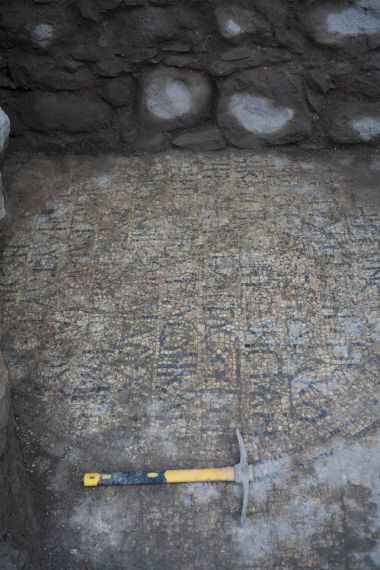Archaeologists uncover inscription to Peter

Archaeologists have uncovered a 1,500-year-old mosaic with an inscription to St Peter.
They believe the discovery is further evidence that the site at El-Araj in Israel is the location of the house of Peter and the town of Bethsaida recorded in the Bible.
The large Greek inscription was found during excavations at a Byzantine-era basilica known as the "Church of the Apostles" because it is traditionally believed to have been built over the house of the Apostles Peter and Andrew.
The inscription references a donor, "Constantine, the servant of Christ," and is followed by a petition for intercession by St Peter, "chief and commander of the heavenly apostles."
It was found within a larger mosaic on the floor of the church's sacristy and is partly decorated with floral patterns.
Archaeologists working on the dig believe the discovery further bolsters the claim by the 8th century bishop of Eichstätt, Willibald, that the church was built over the house of Peter and Andrew.
Willibald records that while on pilgrimage to the Holy Land, he travelled overnight from Capernaum to Kursi at a place he was told "is Bethsaida from which came Peter and Andrew" and that "there is now a church where previously was their house".
The team believe that, just as a church was built over the site traditionally identified as Peter's grave in Rome, his home was "likewise commemorated in Bethsaida".
"This discovery is our strongest indicator that Peter had a special association with the basilica, and it was likely dedicated to him," said Steven Notley, academic director of the dig.
"Since Byzantine Christian tradition routinely identified Peter's home in Bethsaida, and not in Capernaum as is often thought today, it seems likely that the basilica commemorates his house," said
Mordechai Aviam, archaeological director of the excavation, said, "One of the goals of this dig was to check whether we have at the site a layer from the 1st century, which will allow us to suggest a better candidate for the identification of Biblical Bethsaida.
"Not only did we find significant remains from this period, but we also found this important church and the monastery around it."
The team hope to uncover more inscriptions when excavations at the site resume in October.











